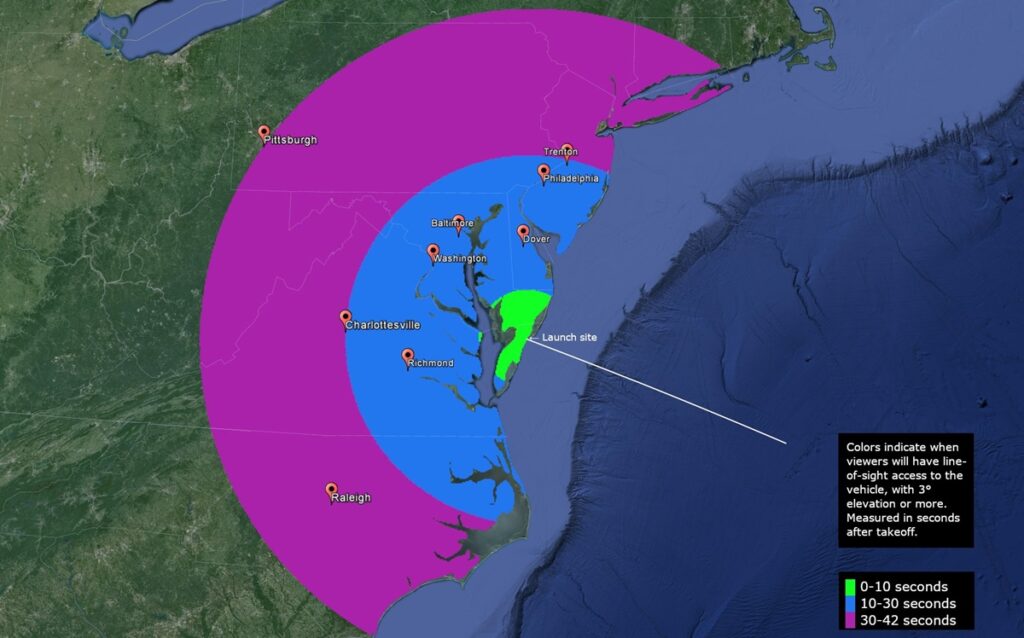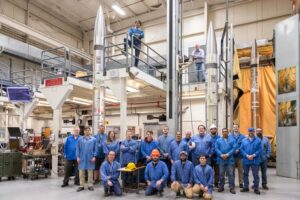
NASA plans to launch multiple rockets around the solar eclipse event on April 8, sending sounding rockets to space from the NASA Wallops spaceport located on the Virginia coast. NASA is launching these rockets to help understand how Earth’s upper atmosphere is affected when sunlight momentarily dims over a portion of the planet.
Three Atmospheric Perturbations around Eclipse Path (APEP) sounding rockets will launch to study the disturbances in the ionosphere created when the Moon eclipses the Sun. The sounding rockets had been previously launched and successfully recovered from White Sands Test Facility in New Mexico, during the October 2023 annular solar eclipse. According to NASA, they have been refurbished with new instrumentation for this year’s solar eclipse. The mission is led by Aroh Barjatya, a professor of engineering physics at Embry-Riddle Aeronautical University in Florida, where he directs the Space and Atmospheric Instrumentation Lab.
The ionosphere is a region of Earth’s atmosphere that is between 55 to 310 miles above the ground. “It’s an electrified region that reflects and refracts radio signals, and also impacts satellite communications as the signals pass through,” said Barjatya. “Understanding the ionosphere and developing models to help us predict disturbances is crucial to making sure our increasingly communication-dependent world operates smoothly.”
The ionosphere forms the boundary between Earth’s lower atmosphere where people live and the vacuum of space. It is made up of a sea of particles that become electrically charged from the Sun’s solar radiation. When night falls, the ionosphere thins out as previously ionized particles relax and recombine back into neutral particles. However, Earth’s terrestrial weather and space weather can impact these particles, making it a dynamic region and difficult to know what the ionosphere will be like at a given time.

The sounding rockets will launch at three different times: 45 minutes before, during, and 45 minutes after the peak local eclipse. These intervals are important to collect data on how the Sun’s sudden disappearance affects the ionosphere, creating disturbances that have the potential to interfere with our communications. The peak of the eclipse will be around 3:22 pm at the NASA Wallops facility.
The APEP rockets are expected to reach a maximum altitude of 260 miles. Each rocket will measure charged and neutral particle density and surrounding electric and magnetic fields.
“Each rocket will eject four secondary instruments the size of a two-liter soda bottle that also measure the same data points, so it’s similar to results from fifteen rockets, while only launching three,” explained Barjatya. Three secondary instruments on each rocket were built by Embry-Riddle, and the fourth one was built at Dartmouth College in New Hampshire.
When the APEP sounding rockets launched during the 2023 annular solar eclipse, scientists saw a sharp reduction in the density of charged particles as the annular eclipse shadow passed over the atmosphere. “We saw the perturbations capable of affecting radio communications in the second and third rockets, but not during the first rocket that was before peak local eclipse” said Barjatya. “We are super excited to relaunch them during the total eclipse, to see if the perturbations start at the same altitude and if their magnitude and scale remain the same.”
NASA TV will feature some launch coverage during it’s special eclipse coverage on April 8. People can also witness the rocket launches in-person in Virginia; the NASA Wallops Visitors Center will be open from 1pm – 4pm for the eclipse event. People across the Mid Atlantic can view the small rockets headed to space in cloud-free skies; the view of the rocket will be most visible at the time of peak eclipse since the sky will be at its darkest point then.